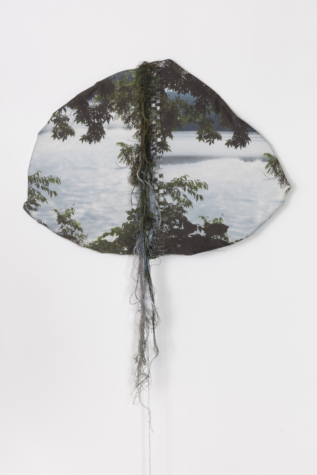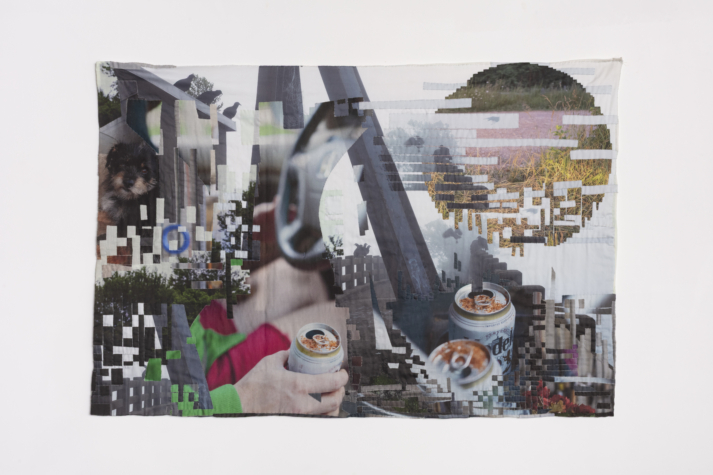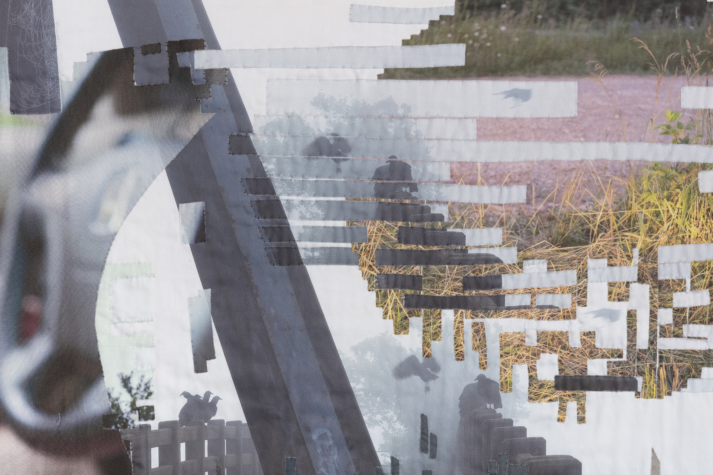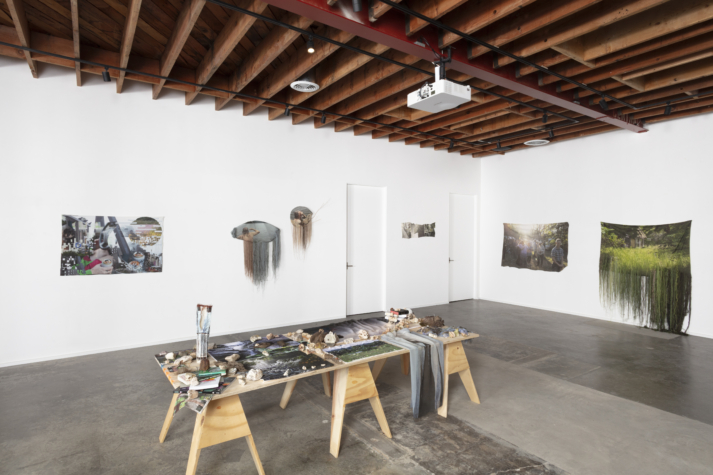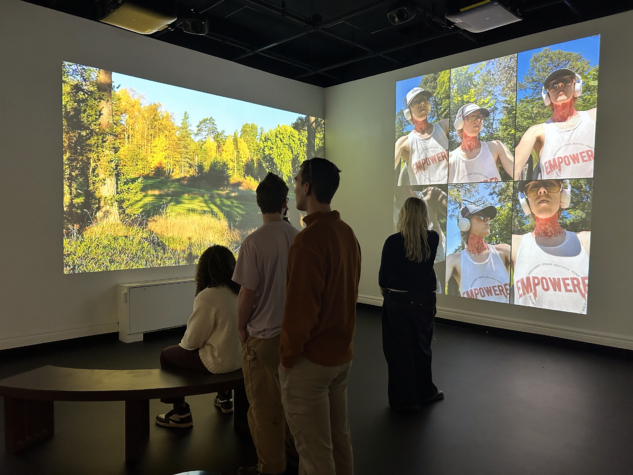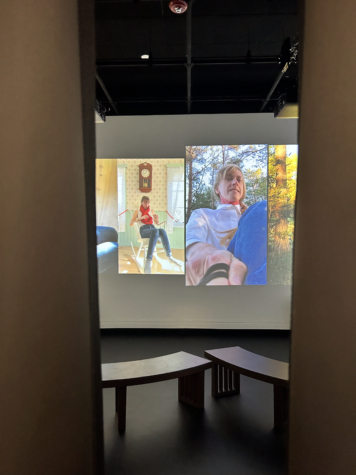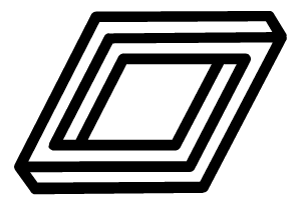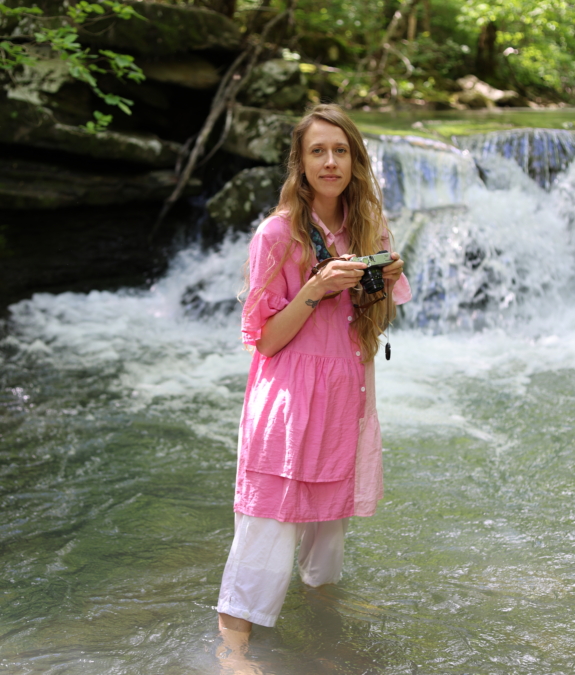
Art & Language:
Writing as Form, Process, and Practice
Art & Language: Writing as Form, Process, and Practice
Taught by Amber Imrie
Fridays, 12–2pm ET | August 1 – December 12, 2025
Culminates in an online group exhibition
How can we sharpen the ways we speak, write, and name our work to amplify its power?
Artists engage with language constantly—often without realizing its full creative potential. From titles, wall labels, and exhibition texts to price lists, proposals, and artist statements, words frame how our work is received. Language also shapes our private practice: notes pinned to the wall, freewriting in sketchbooks, the fragments that surface while we make.
In this course, we explore writing not only as a way to talk about art, but as a form that runs alongside it—sometimes guiding, sometimes embedded, sometimes resisting clarity altogether. We’ll look at how artists across disciplines use language as structure, score, residue, texture, and refusal. And we’ll expand our fluency across both poetic and professional forms—learning to write in ways that clarify without collapsing meaning.
Led by Amber Imrie, the course draws from their recent body of work The Year My Heart Turned to Water, where poetics became both compass and container, guiding hand-stitched photographic landscapes haunted by text and altars where language dissolves into light and water. You’ll be invited to explore writing as a process that is both generative and integrative: text that is stitched, spoken, layered, titled, or quietly held within the work.
We’ll ask:
How does language shape your process and presentation?
How does language live in your work—visibly, sonically, or invisibly?
How do you build a practice that includes language, without explaining yourself away?
How might we create a practice that listens as much as it articulates?
Through bi-weekly live classes, cohort accountability sessions, artist case studies, and individual mentorship, you’ll build a new body of work supported by a set of written texts—poetic and professional—that deepen how your art is made, shared, and understood.
Amber Imrie is a queer artist, art educator, and co-founder of The Alternative Art School. She received her BA from UC Berkeley and MFA from Stanford University. She’s received many awards, fellowships, and residencies including the Murphy Cadogan Award and Anita Squires Fowler Award in Photography. Amber Founded and was editor-in-chief of the art magazine, Venison Magazine from 2014-2017, ran a pop-up art residency Camp Venison in 2015, and has facilitated critique sessions in and outside formal education. Imrie has taught at various institutions, including UC Berkeley and Stanford University. Since 2020 Amber has worked alongside Nato Thompson building the Alternative Art School. Imrie lives in Winslow, Arkansas, and is developing a new body of artworks centered on queering the rural American South. In 2023-2024 Amber spoke at ArtBo, was a curatorial ICI fellow at EXPO, and curated multiple exhibitions focused on queer rural artists.
Enrollment deadline: August 8, 2025
August 8th - December 12th
Fridays
12 - 2pm ET
Online & Recorded
$200 per month
or 1,000
USD
Amber Imrie is a queer artist, art educator, and co-founder of The Alternative Art School. She received her BA from UC Berkeley and MFA from Stanford University. She’s received many awards, fellowships, and residencies including the Murphy Cadogan Award and Anita Squires Fowler Award in Photography. Amber Founded and was editor-in-chief of the art magazine, Venison Magazine from 2014-2017, ran a pop-up art residency Camp Venison in 2015, and has facilitated critique sessions in and outside formal education. Imrie has taught at various institutions, including UC Berkeley and Stanford University. Since 2020 Amber has worked alongside Nato Thompson building the Alternative Art School. Imrie lives in Winslow, Arkansas, and is developing a new body of artworks centered on queering the rural American South. In 2023-2024 Amber spoke at ArtBo, was a curatorial ICI fellow at EXPO, and curated multiple exhibitions focused on queer rural artists.
